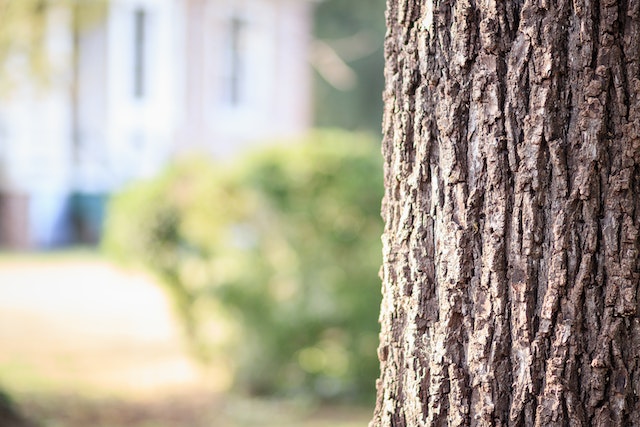A tree is a living organism that is constantly growing and changing. Trees are abundant on most properties and provide shade, natural beauty, wildlife habitats, and much more. While most trees are benign and beneficial when appropriately managed, some hazardous tree can cause severe problems if not recognized. Here are some top tips on identifying and safely removing hazardous tree from your property.
1. Changes in the Bark
Sudden tears or cracks in the bark are a sign of internal decay. If your tree shows sudden changes in the bark, like scarring, brittleness, or peeling, there is likely a problem with the tree’s cambium, where cells divide and grow. When this area becomes damaged or diseased, your trees can be at risk of falling branches and mortality. Trees with cambium problems need to be removed as soon as possible.
2. Browning Leaves
Browning leaves signify excessive water loss from drought, rot, or disease. For trees with thick bark, the first signs of stress can be found in shallow-rooted dying branches where roots meet the trunk. The tree is likely dehydrated and diseased if you see leaves turning brown and falling off limbs rapidly. If left unattended, this can cause a tree to die outright. To ensure your tree isn’t dying due to drought, monitor your watering schedule and take care in watering during dry periods to prevent any water stagnation in roots.
3. Tree Shrinking
If a tree is often windblown, has wavy branches, or is going through periods of shrinkage, the tree is likely stressed and experiencing stress-related diseases like Dutch elm disease. This causes trees to go through periods where they suddenly lose their leaves while trees still have plenty of tissue around the branch or limb. These trees are more likely to be damaged by thunderstorms during this time.
4. Multiple Branches Growing in One Direction
If branches in your tree grow at an angle different from the main trunk, these branches will likely die and fall off. This can cause serious stress to your tree and make it more susceptible to disease. Trees with multiple branches growing at parallel angles are also more prone to wind damage and storm-related breakage.
5. Suckers on Trunks
Suckers are the new growth that appears on trunks of trees over time. These growths result from wounds on the trunk, which produce more growth that can eventually cause serious problems for your tree. The best way to prevent the formation of suckers on your tree is to avoid disturbing a tree trunk at all costs. You can also hire a professional to help with tree service in Portland if you have any trees needing removal due to distress or illness.
6. Dead Limbs
Several problems, including disease, internal decay, old age, or external damage, can cause dead branches or limbs. For example, if the branch is dead from the bottom up, it’s typically due to the tree being dehydrated. If the limb is dead from the top down, it’s most likely due to diseases like Dutch elm disease or cambium damage. If you have dead limbs on your tree and they will not severely affect your property, you can often leave them but try to avoid damaging your bark as this will cause unnecessary stress.
7. Poor Structure
The tree is likely diseased if a tree has poor structure, for example, bending or splitting branches or other unnatural twisting or curvature. Trees with poor structure can also signify an internal rotting problem like a canker. This internal disease commonly affects the sap and heartwood of trees and can be caused by fungus, bacteria, and insect attacks.
8. White Spots on Leaves
White spots on leaves signify insects feeding on fruits and leaves. If you spot white spots on leaves, they could be a symptom of some disease. One thing to look out for is if the white spots are concentrated in any area, as this could mean an insect problem exists in that region. If you have white spots, check your leaves and fruit for any insects or damage, and take care to keep your tree healthy.
Conclusion
These tips will help you spot common problems and dangerous issues with trees on your property. Once you recognize the signs of problems, you can take care of them before they get out of hand.
Apart from this, if you want to know about Important Things To Look For When Viewing A Property In Edgware then please visit our Real Estate category















